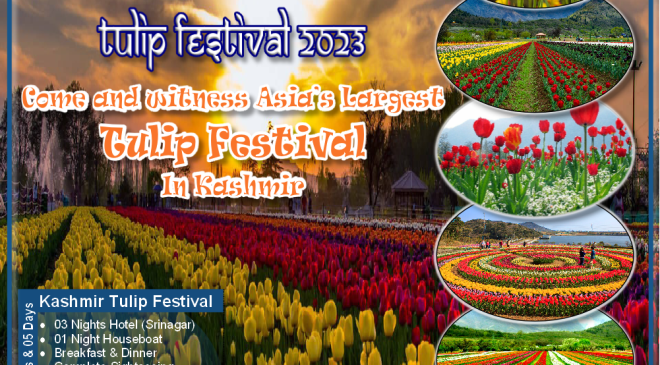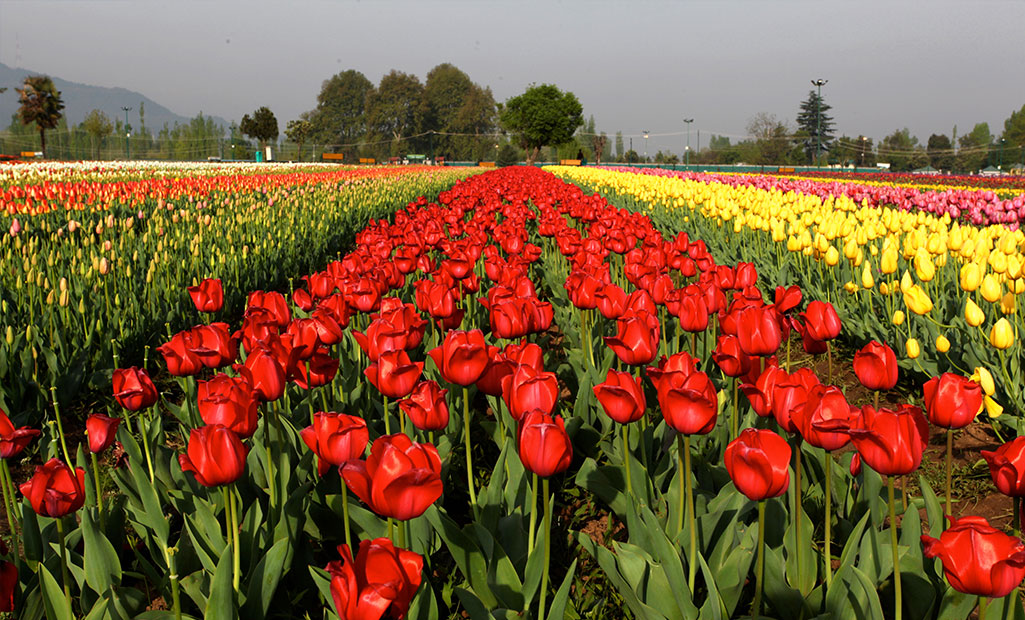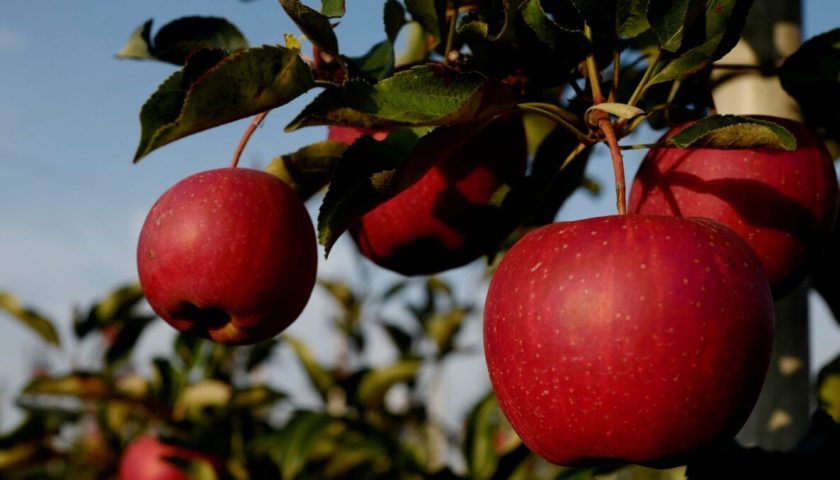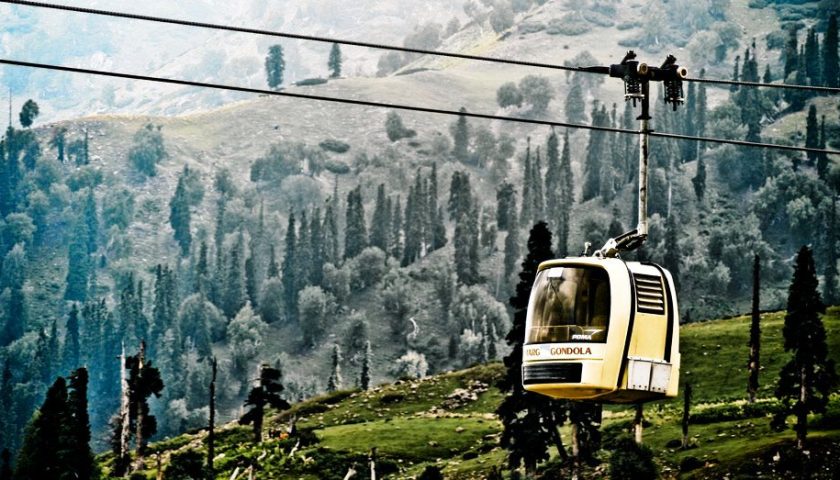With 1.6 million tulip bulbs of 68 varieties in bloom, the magnificent 30-hectare terraced Tulip Garden on the banks of majestic Dal Lake in Kashmir’s summer capital Srinagar, laid in 2006, has been fast drawing people’s attention.
For Sunil and Manpreet, a young couple from Punjab, their first outing after marriage will forever be etched in memory – a sea of tulips with the picturesque Zabarwan mountain range in the backdrop.
The couple had seen pictures of the famous Tulip Garden in Srinagar, one of the largest tulip gardens in Asia, on social media and decided to pay a visit. “We have never seen such a large number of flowers before — the colours, the view… its fabulous,” says Sunil, an assistant professor at a university in Punjab.

With 1.6 million tulip bulbs of 68 varieties in bloom, the magnificent 30-hectare terraced garden on the banks of majestic Dal Lake in Kashmir’s summer capital Srinagar, laid in 2006, has been fast drawing people’s attention.
The mesmerising views had even captured the imagination of Prime Minister Narendra Modi, who tweeted on April 3, “Jammu and Kashmir is beautiful, and even more so during the Tulip season.” The PM had also shared pictures and videos of the garden.
Compared to last few years, the inflow of domestic and foreign tourists has increased manifold, leaving even the local officials surprised. They were expecting a slightly lower turnout owing to Ramadan and rains.
Since its opening on the evening of March 19, the garden has drawn 2,36,000 visitors, with over 70% of them coming from outside the union territory. Last year, some 3,60,000 lakh visitors, most of them locals, had turned up in a month.
The authorities hope the numbers would rise to half a million as Kashmir celebrates Eid in the last week of April.
“This year we are witnessing a large footfall from outside. People are infact visiting Kashmir because of the Tulip Garden. This is ‘Tulip Tourism’ now,” said Sofi Inam ur Rehman, in-charge of the garden.
Encouraged by the response, authorities have set up another tulip garden in Jammu division’s Ramban district, though at a much smaller scale. The Jammu division’s very first Tulip Garden at Sanasar in Ramban district is all set for opening on Saturday.
Besides the 68 varieties of tulips in Srinagar garden, the plot has 12 varieties of daffodils and ten varieties of hyacinths and mascara. Many ornamental and stone fruits also decorate the garden like tulip tree, plum, ornamental peach, Himalayan cherry, Japanese spindle and Junifer. The visitors also enjoy water features like high and low-rise fountains along the middle line of the terraced garden and waterfalls.
Rehman said that not only domestic but even foreign tourists have also been visiting this year. “For the first time this year, we crossed 1,000 foreign tourists from Europe, US, Malaysia and Thailand. It has generated a global appeal,” he said.
Rehman said the main reason for such a rush to Srinagar Tulip garden was publicity as well as the USP of the garden. “Tulip is the USP of this garden. It has such diverse colors which no other plant has. Besides, the location of the garden is also unique. It is situated between the foothills of Zabarwan Mountains and Dal Lake. Even the world’s biggest tulip garden in the Netherlands does have this kind of mesmerising location and ambience,” he said.
Omia, 25, from Thailand, who had come with her husband, agreed to what Rehman said. “For Thai people, if anyone wants to see a tulip, one has to go all the way to Amsterdam, very far away. Instead, this place is closer and pretty wonderful. The weather is moderate and people are so nice. I will visit again,” she said on the first day of her Kashmir visit.
Authorities also feel that the improvement in law-and-order situation, coupled with rigorous promotion of destination Kashmir after the abrogation of Article 370 in August 2019, has also led to the increased rush of tourists to Kashmir. Last year, over 26.7 lakh tourists had visited Kashmir, and the arrivals this year are also looking encouraging.
Vipal Choubey, in his 30s, and his wife from Delhi were in Kashmir for their honeymoon after their friends visited post 2019. “After the abrogation of Article 370, many of my friends came here and recommended it to me also. That gave me some confidence…,” he said as his wife behind him nodded in agreement. “One thing is for sure, the Kashmir which we see in the media through the eyes of politicians is not the reality. The people are so good,” he said.
A group of senior citizens from Bangalore presented a contrasting view about the domestic tourists’ imagination towards Kashmir.
Atul Kumar said that there was a very ‘positive atmosphere’ in the country about Kashmir. “Everybody wanted to visit Kashmir but earlier people were worried about visiting, now they are not. Hopefully things get better,” he said.
However his relative Anjali, who has retired from Indian Institute of Science and was on first visit to Kashmir, differed. “Everybody wants to come to Kashmir, no matter where you are in India. However, the thing is when you get the appropriate time,” she said.
Usually, the tulip bloom starts by late March. The average life of a tulip flower is 20 days and can stretch up to 25 with the overall bloom getting extended by adding late-blooming varieties of tulips.
At least 60 gardeners are working round the clock at the garden to make sure that the flowers are properly taken care of. The garden is divided into 36 plots with 16-18 beds in each. There are three parks inside the compound as well. “Our hard work never stops. When we give our blood and sweat for 11 months, you get this grandeur. Despite such efforts, the services of many of our gardeners are yet to be regularised,” said Abdul Rehman, a gardener.
Kashmir’s connection with tulips traces its origin back to hundreds of years when the flowers were grown on muddy rooftops of houses. Gradually, people started planting them in kitchen gardens and flower beds. In 2005-06, the then state government led by Ghulam Nabi Azad decided to convert Siraj Bagh into a regal tulip garden, keeping up with Kashmir’s historical ties with the flower variety.






